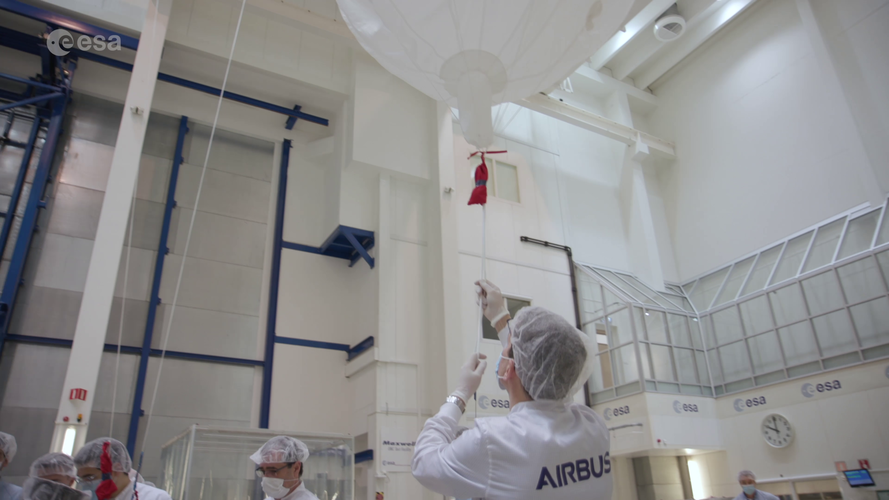
Video:
00:01:02
The 3 m-long magnetometer boom of the Solar wind Magnetosphere Ionosphere Link Explorer (Smile) is deployed under helium-filled balloons to simulate the weightlessness conditions of space.
Smile is a joint mission between ESA and the Chinese Academy of Sciences (CAS) and will aim to build a more complete understanding of the Sun-Earth connection by measuring the solar wind and its dynamic interaction with the magnetosphere.
The structural and thermal model of the Smile payload module is currently undergoing testing at the European Space Research and Technology Centre (ESTEC) in Noordwijk, the Netherlands. Missions frequently come ‘home’ to ESA’s technical heart to be put through the rigours of launch and the space environment to confirm they are ready for operating in the harsh conditions of space.
The magnetometer boom deployment followed a thermal vacuum test and successfully verified its functionality, an important step in the mission’s test campaign.
Once in space, the sensors on the magnetometer boom will provide in-situ magnetic measurements around the spacecraft. The 3 m-long boom is necessary to minimize the magnetic perturbations from the spacecraft and allow precise measurement of the environment. It is one of four instrument suites for in-situ characterisation (ions and magnetic field) and imaging (soft X-ray and UV) of Earth’s magnetosphere.
The magnetometer is provided by CAS, who is responsible for three scientific instruments, the platform, the mission and science operations. ESA is responsible for the Payload Module, the launch vehicle, one of the scientific instruments and part of the science operations.
Despite Covid travelling restrictions sadly preventing the Chinese team from being physically present, they were able to follow with a real-time video stream. The success of the test is the latest demonstration of the close and good cooperation among the European and Chinese teams involved in Smile.
The payload module has now moved to Airbus (Madrid, Spain) for mechanical testing. Following the conclusion of that test campaign, it will then be shipped to China in March for integration on the platform for spacecraft-level qualification, during which the boom will be deployed once again.
Click here for original story, Balloon boom
Source: ESA Space Engineering & Technology